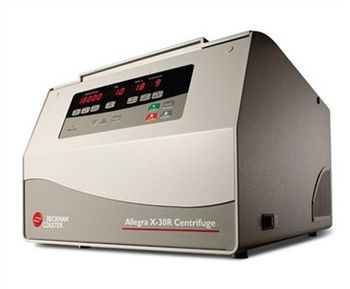
When it comes to common technology in a laboratory, centrifuges rise toward the top of the list. If a scientist wants the liquid at the bottom of the tube, but it’s distributed along the sides in droplets, centrifuge it. Need to separate the cells from a suspension? Centrifuge it. This tool also comes into play in a wide range of other workflows, including purifying DNA, RNA, or proteins. As Dr. Lars Borrmann, group marketing manager at Eppendorf (Hauppauge, NY), says, “It’s very common technology.”
To meet so many applications, centrifuges come in many forms. Microcentrifuges can spin 1.5- to 2-milliliter tubes at speeds that provide 20,000 times the force of gravity (g). Molecular biologists use this kind of centrifuge when purifying nucleic acids or proteins. Many researchers use a multipurpose centrifuge. These come in benchtop or floor models and provide considerable versatility. For example, it might spin tubes that range in volume from 1.5 milliliters to 1 liter. These can even spin multiwell plates. For faster spinning, researchers use an ultracentrifuge, which can spin tubes at speeds that generate 100,000 to 1,000,000 x g. “This could be used to separate proteins based on their mass,” says Borrmann. So-called flow-through centrifuges provide nonstop spinning, which comes in handy when someone needs to spin down large volumes—up to a few thousand liters—from a bioprocessing fermenter or tank. “You can spin the entire liquid through,” says Borrmann, “and it separates the cells from the liquid in a continuous flow.”
Increasing comfort
Anyone who ever used an ultracentrifuge years ago knows that “easy to use” did not describe that device. After loading tubes in the rotor, you screwed down the top; it felt like reaching into the bottom of a washing machine to get the rotor in place. The process is a little easier now.
“There are lots of factors you can improve,” says Borrmann. For example, giving the device a lower profile provides easier access. Instead of using a screw that requires several turns to tighten, Borrmann says they have a QuickLock rotor that “closes in a quarter turn and is safely closed.”
These features also play a part in what Borrmann calls an overall trend toward making centrifuges more user-friendly. His company even makes sure that the lid closes easily. “It’s like a door on a Cadillac closing,” he says. “It’s a soft-touch approach that gently closes and locks automatically.”
Read more at Lab Manager Magazine
View our Centrifuge category on LabWrench
